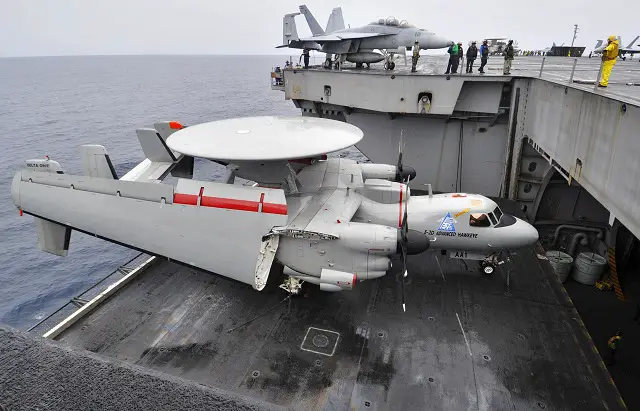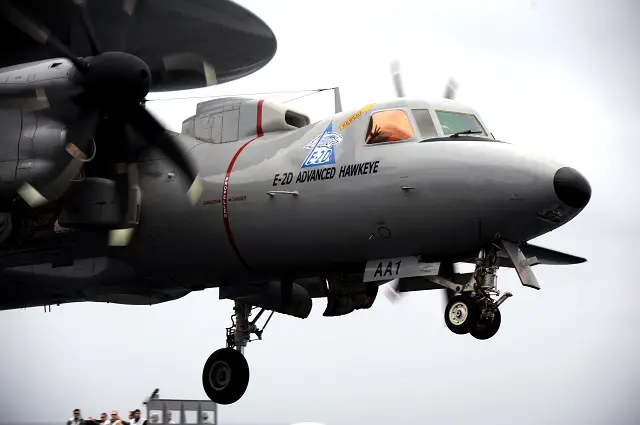Breaking news
U.S. Navy E-2D Advanced Hawkeye to be Forward Deployed to Japan.
| 2017
|
|
|||
 An E-2D Hawkeye assigned to Test and Evaluation Squadron is moved from the flight deck to the hangar bay aboard the aircraft carrier USS Harry S. Truman. The "D" model is aboard Harry S. Truman for operational testing and evaluation before delivery to the fleet. Picture: U.S. Navy An E-2D Hawkeye assigned to Test and Evaluation Squadron is moved from the flight deck to the hangar bay aboard the aircraft carrier USS Harry S. Truman. The "D" model is aboard Harry S. Truman for operational testing and evaluation before delivery to the fleet. Picture: U.S. Navy |
|||
|
|
|||
|
These moves are in accordance with the Navy’s strategic vision for the rebalance to the Asia-Pacific, a plan to put the most advanced and capable units forward in order to support the United States’ commitment to the defense of Japan and the security and stability of the region.
VAW-115 has patrolled the skies of the Pacific since April 1967, deployed onboard multiple forward deployed U.S. Navy aircraft carriers, and participated in exercises such as Valiant Shield, Malabar, Talisman Saber, ANNUALEX, and Keen Sword. VAW-125 was established in 1968 and served as an East Coast-based early warning squadron that most recently supported USS Theodore Roosevelt (CVN-71) as part of Operation Inherent Resolve. The E-2D is the latest variant of the long-running E-2 Hawkeye series of aircraft, which employs long-range radar and electronic communications capabilities to oversee the battlespace and detect threats beyond the sensor range of other friendly units. The Advanced Hawkeye’s suite of systems allow it to act as the “digital quarterback” of the fleet, collecting and distributing the tactical picture to command centers and other assets through onboard data processing subsystems. New features of the E-2D include the A/N-APY9 radar which is capable of both mechanical and electronic sweeping, an “all glass” tactical cockpit, an upgraded mission computer, and upgraded data link capabilities. The first variant of E-2 series entered service in 1964, making the Hawkeye the Navy’s longest serving carrier-based aircraft. To learn more about the E-2D Advanced Hawkeye read our special focus at this link. |
|||



























